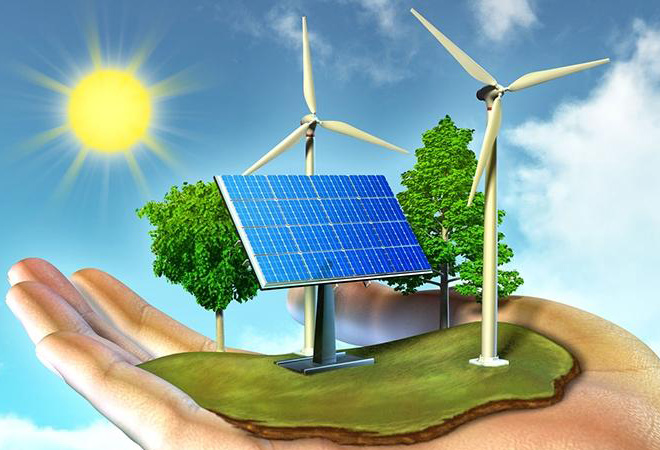The Green Energy Boom: Assessing Solar, Wind, and Hydro Power’s Role in a Sustainable Future
In the quest for a sustainable future, the world is witnessing a remarkable green energy boom. As concerns over climate change escalate and the need to reduce carbon emissions becomes more urgent, renewable energy sources have gained significant traction. Among these, solar, wind, and hydro power have emerged as frontrunners in reshaping the global energy landscape. This article delves into the pivotal roles that these renewable sources play in paving the way for a cleaner and more sustainable future.
Solar Power: Harnessing the Sun’s Abundant Energy
Solar power, derived from the sun’s radiant energy, has become an emblem of sustainability. One of its most significant advantages is its abundant availability. With the sun emitting an astonishing 173,000 terawatts of energy continuously—more than 10,000 times the world’s total energy use—solar power holds the potential to revolutionize our energy consumption patterns.
Photovoltaic (PV) solar panels, which convert sunlight directly into electricity, have witnessed rapid advancements in technology, efficiency, and affordability. As research and innovation continue, solar panels are becoming more accessible to individuals, businesses, and communities. The decentralized nature of solar power also empowers individuals to become prosumers, generating their own electricity and even feeding excess power back into the grid.
Wind Power: Tapping into Nature’s Gusts
Wind power has also emerged as a formidable contender in the green energy arena. Harnessing the kinetic energy of moving air, wind turbines have grown taller, more efficient, and increasingly aesthetically integrated into landscapes. Offshore wind farms, situated in open waters, have capitalized on consistent and stronger winds, contributing significantly to the global renewable energy capacity.
A remarkable advantage of wind power is its scalability. Wind farms can range from small installations powering individual homes to massive arrays generating electricity for entire cities. Furthermore, the operational phase of wind turbines produces minimal greenhouse gas emissions, making them an eco-friendly alternative to fossil fuel-based power generation.
Hydro Power: Capitalizing on the Flowing Resource
Hydropower, generated from the movement of water, has a long history dating back to ancient civilizations. Today, modern hydropower facilities have refined the process, utilizing dams and turbines to convert the kinetic energy of flowing water into electricity. Hydropower’s reliability and consistency make it an essential component of the green energy portfolio.
Run-of-the-river and reservoir-based hydropower systems offer flexibility in adapting to various geographic and environmental conditions. While concerns about ecological impacts of large dams have led to increased emphasis on sustainable hydropower practices, the overall environmental footprint of hydropower is significantly lower compared to fossil fuel power plants.
Environmental Benefits and Challenges
The surge in solar, wind, and hydro power adoption is driven by their impressive environmental benefits. These sources produce little to no greenhouse gas emissions during operation, helping to mitigate the impacts of climate change. Reduced air pollution, water conservation, and decreased dependence on fossil fuels are among the positive outcomes of transitioning to these renewable sources.
However, challenges persist. Solar power generation relies on sunlight availability, making it intermittent in nature. Energy storage technologies, such as batteries, are crucial for storing excess energy during sunny periods for use during cloudy days or nighttime. Similarly, wind power’s intermittent nature requires advancements in energy storage and grid management to ensure a stable and consistent power supply.
Hydropower projects can sometimes face opposition due to their potential impact on aquatic ecosystems, fish populations, and local communities. Striking a balance between energy generation and environmental preservation remains a complex challenge.
Economic and Social Impacts
The green energy boom extends beyond environmental considerations, also yielding substantial economic and social impacts. The renewable energy sector has become a driver of job creation, offering employment opportunities in manufacturing, installation, maintenance, and research. As the industry expands, more skilled workers are needed, contributing to local economies and fostering innovation.
Furthermore, the adoption of solar panels on residential and commercial buildings has transformed energy consumers into producers. Through net metering and feed-in tariff programs, individuals can sell excess energy back to the grid, potentially turning energy expenses into income streams.
Investment in a Sustainable Future
Governments, businesses, and individuals around the world are recognizing the imperative of investing in renewable energy sources to ensure a sustainable future. Financial incentives, subsidies, and supportive policies have accelerated the adoption of solar, wind, and hydro power technologies. These incentives not only stimulate economic growth but also accelerate the transition to a low-carbon energy landscape.
Conclusion
The green energy boom, driven by solar, wind, and hydro power, is reshaping our approach to energy generation and consumption. These renewable sources are instrumental in reducing carbon emissions, mitigating climate change, and fostering sustainable economic growth. While challenges remain, ongoing technological advancements, coupled with supportive policies, are propelling the world closer to a future powered by clean and abundant renewable energy. By embracing these transformative technologies, we can collectively work towards securing a healthier, more sustainable planet for generations to come.


